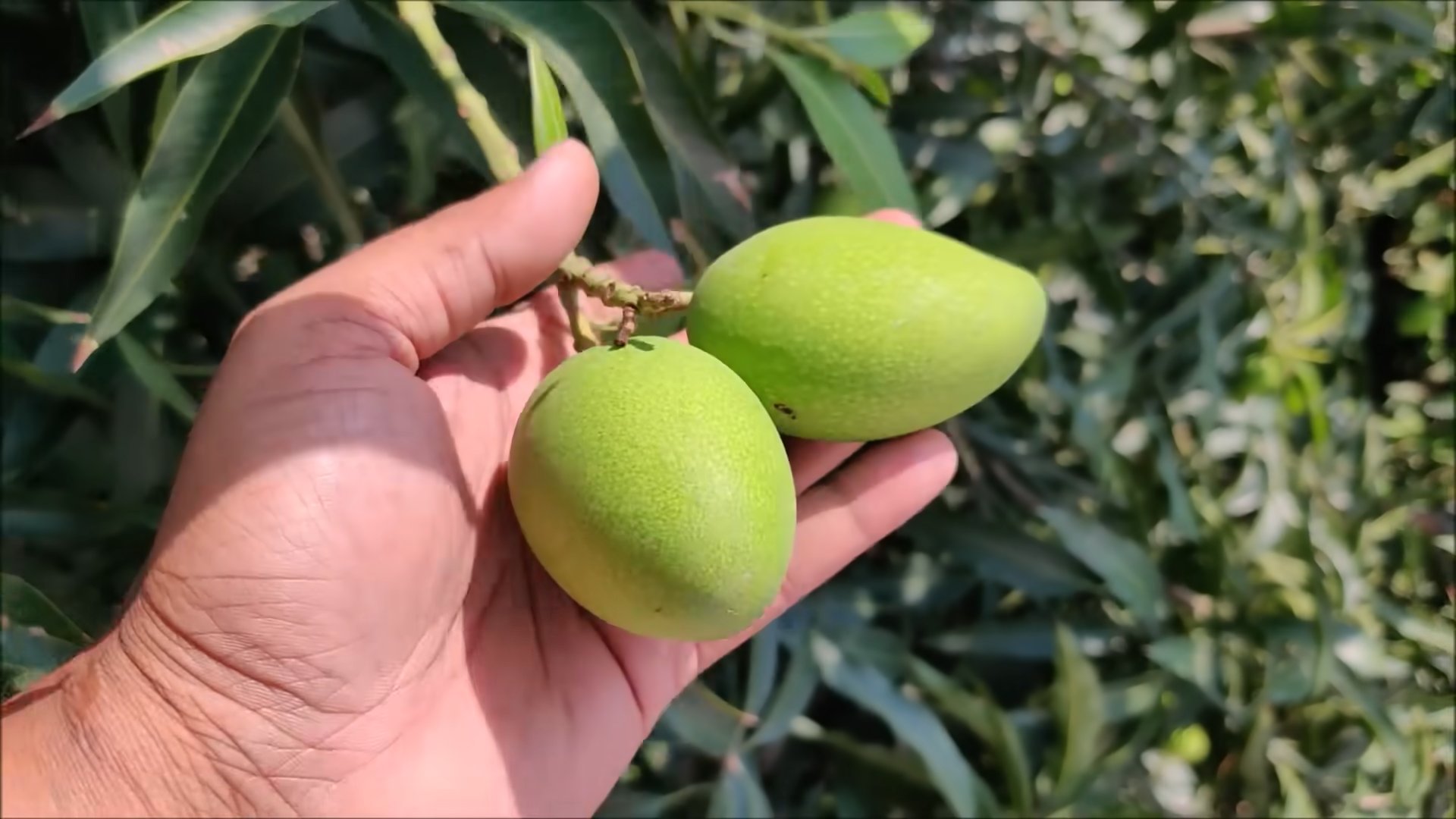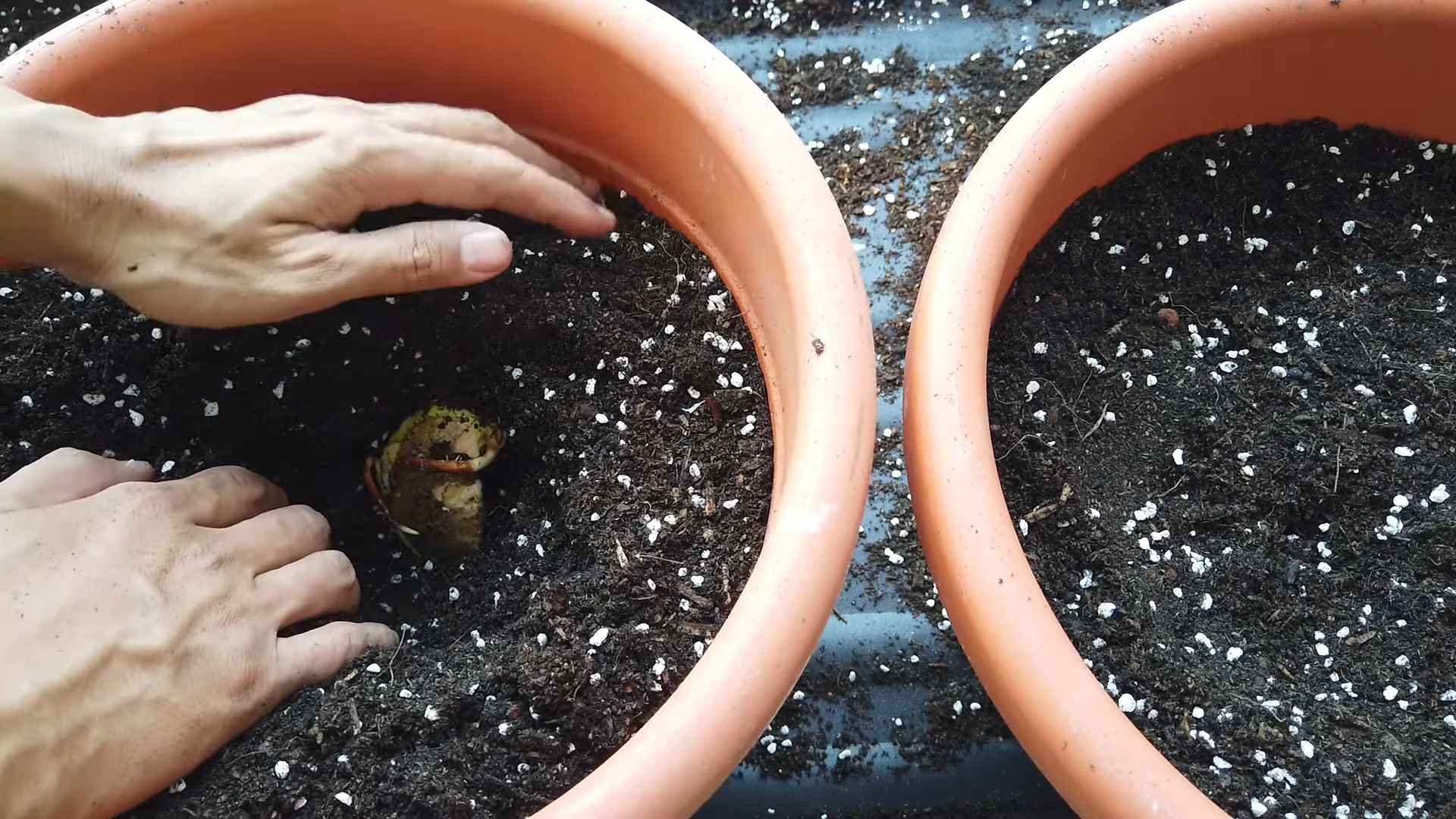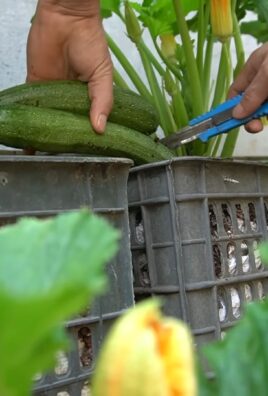Grow Mango Tree from Seed: Imagine biting into a juicy, sun-ripened mango, bursting with tropical flavor, and knowing you grew it yourself! It sounds like a dream, right? Well, it doesn’t have to be! This DIY guide will walk you through the surprisingly simple process of cultivating your very own mango tree from a single seed. Forget expensive nursery saplings; we’re going back to basics and embracing the magic of nature.
Mangoes have a rich history, deeply intertwined with cultures across South Asia for thousands of years. Revered for their delicious fruit and medicinal properties, they’ve been cultivated and celebrated in art, literature, and religious ceremonies. Now, you can participate in this ancient tradition, bringing a piece of that history into your own backyard.
Why should you learn this DIY trick? Because growing your own mango tree is incredibly rewarding! Not only will you have a source of fresh, organic fruit, but you’ll also experience the joy of nurturing a plant from its earliest stages. Plus, it’s a fantastic way to connect with nature, learn about botany, and impress your friends and family with your green thumb. Let’s be honest, who wouldn’t want to say, “I grew this mango myself!”? So, let’s dive in and discover how easy it is to grow mango tree from seed and enjoy the fruits (literally!) of your labor.

Growing Your Own Mango Tree From Seed: A Tropical Adventure!
Hey there, fellow plant enthusiasts! Ever dreamt of having your own mango tree, laden with juicy, sun-ripened fruit, right in your backyard? Well, guess what? You can! Growing a mango tree from seed is a surprisingly rewarding DIY project. It takes patience, sure, but the feeling of nurturing a tiny seed into a thriving tree is absolutely priceless. Let’s dive into how you can embark on this tropical adventure!
Choosing the Right Mango and Preparing the Seed
Before we get our hands dirty, we need to talk about the most crucial step: selecting the right mango and preparing its seed. Not all mangoes are created equal when it comes to germination.
* Variety Matters: While you can technically try growing a mango from any seed, some varieties are more likely to sprout and thrive than others. Polyembryonic mangoes (meaning they contain multiple embryos) are your best bet. These include varieties like Tommy Atkins, Haden, and Kent, which are commonly found in grocery stores. However, keep in mind that the fruit produced by your tree might not be exactly like the parent mango due to genetic variation.
* Ripeness is Key: Choose a mango that’s fully ripe. It should be fragrant, slightly soft to the touch, and have vibrant color. Overripe mangoes might have seeds that have already started to decay.
* Freshness is Paramount: The sooner you extract and plant the seed after eating the mango, the better. Don’t let the seed dry out completely.
Now, let’s get that seed ready for its new life!
Step-by-Step Seed Extraction and Preparation:
1. Enjoy the Mango! First things first, savor that delicious mango! Remove as much of the flesh as possible from the seed. The cleaner the seed, the less likely it is to attract mold or pests.
2. Carefully Cut Open the Husk: This is where things get a little tricky. The mango seed is encased in a tough, fibrous husk. You’ll need to carefully cut this open to get to the actual seed inside. Use a sharp knife or pruning shears. Be extremely cautious not to damage the seed itself. I usually make a shallow cut along the edge of the husk and then gently pry it open. Think of it like opening an oyster – patience and finesse are key!
3. Extract the Seed: Once you’ve opened the husk, you’ll find one or more bean-shaped seeds inside. Gently remove them. They might be brown or slightly wrinkled.
4. Inspect the Seed: Check the seed for any signs of damage or decay. Discard any seeds that are soft, discolored, or have an unpleasant odor.
5. Optional: Soak the Seed: Some people recommend soaking the seed in water for 24 hours before planting. This can help to soften the seed coat and encourage germination. I’ve had success both with and without soaking, so it’s really up to you.
Germinating Your Mango Seed: Two Popular Methods
Okay, we’ve got our seed prepped and ready to go. Now, let’s talk about how to actually get it to sprout. There are two main methods I’ve used successfully: the paper towel method and direct planting.
Method 1: The Paper Towel Method (For Observation and Early Root Development)
This method is great because you can visually monitor the seed’s progress. It’s like having a little science experiment right in your kitchen!
Step-by-Step Paper Towel Germination:
1. Dampen a Paper Towel: Take a paper towel and dampen it thoroughly with water. You want it to be moist, but not soaking wet.
2. Wrap the Seed: Place the mango seed on the damp paper towel and fold the towel over it, completely encasing the seed.
3. Place in a Plastic Bag: Put the wrapped seed in a resealable plastic bag. This will help to maintain humidity.
4. Find a Warm Spot: Place the bag in a warm location, such as on top of your refrigerator or near a sunny window (but not in direct sunlight). Mangoes love warmth!
5. Check Regularly: Check the seed every few days to make sure the paper towel is still moist. If it’s drying out, spritz it with water.
6. Wait Patiently: Germination can take anywhere from one to four weeks, so be patient! You should start to see a root emerging from the seed.
7. Plant the Sprouted Seed: Once the root is about an inch long, it’s time to plant the seed in a pot.
Method 2: Direct Planting (For a More Natural Approach)
This method involves planting the seed directly into a pot of soil. It’s a bit less hands-on than the paper towel method, but it can be just as effective.
Step-by-Step Direct Planting:
1. Choose a Pot: Select a pot that’s at least 6 inches in diameter and has drainage holes. Mango trees need well-draining soil.
2. Prepare the Soil: Fill the pot with a well-draining potting mix. A mix of potting soil, perlite, and vermiculite works well.
3. Plant the Seed: Make a hole in the center of the soil that’s about 1-2 inches deep. Place the mango seed in the hole with the pointed end facing up (where the root will emerge). Cover the seed with soil and gently pat it down.
4. Water Thoroughly: Water the soil thoroughly until water drains out of the bottom of the pot.
5. Find a Warm, Sunny Spot: Place the pot in a warm, sunny location. Mangoes need plenty of sunlight to thrive.
6. Keep the Soil Moist: Keep the soil consistently moist, but not waterlogged. Water when the top inch of soil feels dry to the touch.
7. Wait Patiently: Again, germination can take several weeks, so be patient!
Caring for Your Mango Seedling: Nurturing Your Little Tree
Congratulations! You’ve successfully germinated your mango seed and now have a tiny seedling. Now comes the important part: providing the right care to help it grow into a healthy, productive tree.
* Sunlight: Mangoes are sun-loving plants. Your seedling needs at least 6-8 hours of direct sunlight per day. If you’re growing it indoors, place it near a sunny window or use a grow light.
* Watering: Water your seedling regularly, but avoid overwatering. Allow the top inch of soil to dry out between waterings. Overwatering can lead to root rot, which can be fatal to your young tree.
* Fertilizing: Feed your seedling with a balanced fertilizer every few weeks during the growing season (spring and summer). Look for a fertilizer that’s specifically formulated for fruit trees.
* Pruning: As your tree grows, you may need to prune it to maintain its shape and encourage branching. Prune away any dead or diseased branches.
* Repotting: As your tree grows, it will eventually need to be repotted into a larger container. Choose a pot that’s at least twice the size of the current pot.
* Pest and Disease Control: Keep an eye out for pests and diseases. Common mango pests include aphids, scale, and mealybugs. Treat infestations promptly with insecticidal soap or neem oil.
Transplanting Your Mango Tree: From Pot to Ground (If Applicable)
If you live in a climate where mangoes can grow outdoors year-round (USDA zones 9-11), you can eventually transplant your tree into the ground. This will give it more room to grow and produce fruit.
Step-by-Step Transplanting:
1. Choose a Location: Select a location that receives full sun and has well-draining soil. Mango trees need plenty of space to grow, so make sure there’s enough room for the tree to reach its mature size (which can be quite large!).
2. Prepare the Soil: Dig a hole that’s twice as wide and as deep as the root ball of your tree. Amend the soil with compost or other organic matter to improve drainage and fertility.
3. Carefully Remove the Tree: Gently remove the tree from its pot, being careful not to damage the roots.
4. Place the Tree in the Hole: Place the tree in the hole, making sure the top of the root ball is level with the ground.
5. Backfill with Soil: Backfill the hole with soil, gently patting it down around the roots.
6. Water Thoroughly: Water the tree thoroughly until water drains out of the bottom of the hole.
7. Mulch: Apply a layer of mulch around the base of the tree to help retain moisture and suppress weeds.
Important Considerations and Potential Challenges
Growing a mango tree from seed is

Conclusion
So, there you have it! Growing a mango tree from seed isn’t just a fun project; it’s a rewarding journey that connects you to the natural world and provides the potential for delicious, homegrown fruit in the years to come. While it requires patience and a little bit of effort, the satisfaction of nurturing a tiny seed into a thriving tree is unparalleled. Forget those expensive, store-bought mangoes for a moment and imagine plucking your own, bursting with flavor, straight from your backyard. That’s the promise of this DIY adventure.
This method, focusing on careful seed extraction, proper germination techniques, and consistent care, significantly increases your chances of success compared to simply planting a seed and hoping for the best. We’ve walked you through each step, from selecting the right mango to providing the optimal environment for your seedling to flourish.
But don’t stop there! Experiment with different mango varieties to discover your favorite flavor profile. Try grafting a known variety onto your seedling once it’s established to ensure you get the specific type of mango you desire. Consider using different potting mixes to see which one yields the best results in your local climate. The possibilities are endless!
Remember, growing a mango tree from seed is a long-term commitment. It may take several years before your tree produces fruit, but the journey is just as important as the destination. Enjoy the process of watching your tree grow, learning about its needs, and connecting with nature in a meaningful way.
We wholeheartedly encourage you to give this DIY trick a try. It’s an excellent way to learn about botany, connect with nature, and potentially enjoy delicious, homegrown mangoes for years to come. Don’t be intimidated by the process; with a little patience and dedication, you can successfully grow your own mango tree from seed.
And most importantly, we want to hear about your experience! Share your successes, your challenges, and any tips or tricks you discover along the way. Post photos of your seedlings, ask questions, and connect with other mango enthusiasts in the comments section below. Let’s create a community of passionate mango growers and learn from each other’s experiences. Your insights could be invaluable to someone just starting their own mango-growing journey. So, grab a mango, extract that seed, and embark on this exciting adventure. You might just surprise yourself with what you can achieve! Let’s all learn how to grow mango tree from seed together!
Frequently Asked Questions (FAQ)
1. What type of mango should I use to grow a tree from seed?
The best mangoes to use are those that are fully ripe and have a polyembryonic seed. Polyembryonic seeds contain multiple embryos, increasing the chances of germination and potentially producing trees that are closer to the parent tree in terms of fruit quality. Some popular polyembryonic varieties include Tommy Atkins, Haden, and Kent. However, even monoembryonic varieties (containing only one embryo) can be used, although the resulting tree may not produce fruit identical to the parent. Look for mangoes that are free from disease and blemishes.
2. How long does it take for a mango seed to germinate?
Germination time can vary depending on the variety of mango, the freshness of the seed, and the environmental conditions. Generally, it takes anywhere from 1 to 4 weeks for a mango seed to germinate. Providing consistent moisture, warmth (around 70-80°F or 21-27°C), and proper drainage will help speed up the process. Soaking the seed in water for 24 hours before planting can also improve germination rates.
3. What kind of soil should I use for my mango seedling?
Mango seedlings thrive in well-draining soil that is rich in organic matter. A good potting mix would be a combination of peat moss, perlite, and vermiculite. You can also add some compost or well-rotted manure to provide extra nutrients. Avoid using heavy clay soils, as they can retain too much moisture and lead to root rot. The soil pH should be slightly acidic to neutral, ideally between 6.0 and 7.0.
4. How often should I water my mango seedling?
Water your mango seedling regularly, keeping the soil consistently moist but not waterlogged. The frequency of watering will depend on the climate, the type of soil, and the size of the pot. Check the soil moisture level regularly by sticking your finger into the soil. If the top inch feels dry, it’s time to water. During the warmer months, you may need to water more frequently than during the cooler months. Ensure the pot has drainage holes to prevent water from accumulating at the bottom.
5. How much sunlight does a mango seedling need?
Mango seedlings need plenty of sunlight to grow and thrive. Aim for at least 6-8 hours of direct sunlight per day. If you are growing your seedling indoors, place it near a sunny window or use a grow light to supplement the natural light. As the seedling grows, gradually acclimate it to outdoor conditions before transplanting it into the ground.
6. When should I transplant my mango seedling into the ground?
The best time to transplant your mango seedling into the ground is during the spring or early summer, after the last frost has passed. Choose a location that receives plenty of sunlight and has well-draining soil. Dig a hole that is twice as wide and as deep as the root ball. Gently remove the seedling from its pot and place it in the hole. Backfill the hole with soil and water thoroughly. Mulch around the base of the tree to help retain moisture and suppress weeds.
7. How long does it take for a mango tree grown from seed to produce fruit?
Mango trees grown from seed typically take 5-8 years to produce fruit. However, the exact time can vary depending on the variety of mango, the climate, and the growing conditions. Grafting a known variety onto your seedling can significantly reduce the time it takes to produce fruit, often to 2-3 years.
8. Can I grow a mango tree in a pot?
Yes, you can grow a mango tree in a pot, especially if you live in a climate with cold winters. Choose a large pot with drainage holes and use a well-draining potting mix. Dwarf mango varieties are particularly well-suited for growing in pots. You will need to repot the tree every few years as it grows larger. Provide regular watering, fertilization, and pruning to keep the tree healthy and productive.
9. What are some common problems that affect mango trees?
Some common problems that affect mango trees include anthracnose, powdery mildew, fruit flies, and scale insects. Anthracnose and powdery mildew are fungal diseases that can cause leaf spots and fruit rot. Fruit flies can damage the fruit by laying eggs inside. Scale insects are small, sap-sucking insects that can weaken the tree. Regular monitoring and appropriate pest and disease control measures can help prevent and manage these problems.
10. How do I prune a mango tree?
Pruning is essential for maintaining the shape and health of your mango tree. Prune your tree during the dormant season (late winter or early spring) to remove dead, damaged, or crossing branches. You can also prune to control the size and shape of the tree and to encourage fruit production. Remove any suckers that grow from the base of the tree. When pruning, make clean cuts at a 45-degree angle, just above a bud or branch.





Leave a Comment